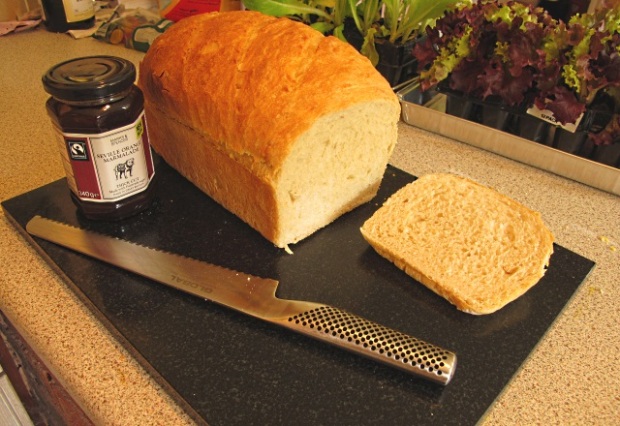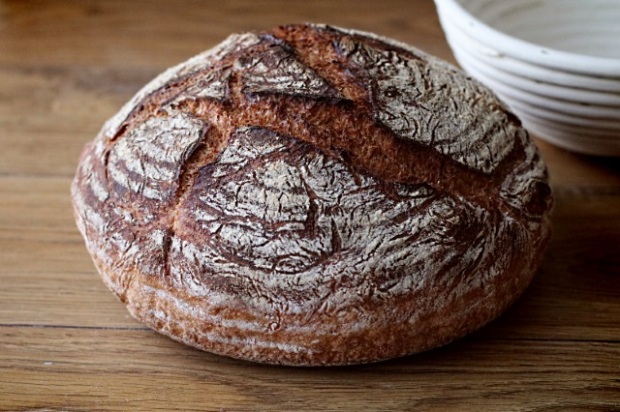Starting at the beginning is always a good idea, so with venturing into the world of cooking I did just that. Cheese on toast was already in the bag, so how about trying to make the bread for it? This is what happened …
The first two attempts at baking bread were far from successful. I followed what I believed were tried and tested techniques of kneading, rising and baking. The results were loaves that had the shape, consistency and aerodynamic capabilities of a discus (yes, I did throw one just to test this out because there was no way I was going to eat it).
Undeterred, I asked around and was pointed in the direction of author, cook and all round superb chap Dan Lepard. In his book Short and Sweet, he explains a minimal knead technique for baking bread that made the whole process simple and foolproof. And I really do mean foolproof. 🙂
The Result
The loaf at the top was my first successful loaf. Not much to look at, but boy did it smell and taste good with some melted butter (it was still warm) and marmalade. Although I think that was partly due to the sweet taste of victory at finally, after too many years than I care to mention, having successfully made my first loaf of bread. Hurrah!
The picture below is of the second loaf I made, using a loaf tin. Just takes a bit of practice, and heading in the right direction.

Looking Back …
Fast forward a little over a year to August 2017. Since writing this first entry on baking bread, I have practised over the months, improving as I went. I also moved from Dan Lepard’s approach to one by Ken Forkish. This is described in the Crusty Artisan Bread blog post. It still uses the principles minimal knead, and produces loaves like this:

Good luck with your baking!

This looks like a really good starting point, I’m really eager to give this a go an see what happens!
LikeLiked by 1 person
Asides from the difference in temperature, do you find that the result differs based on fan/non-fan?
LikeLiked by 1 person
Non-fan is definitely the way to go, in my experience loaves made using non-fan settings are markedly better. I used to use fan setting, however I went to a talk about the science of bread making and long story short was persuaded that non-fan is better.
One of the main reasons is moisture retention. Fan ovens have a big fan at the back that blows air around the cavity space, and this will also cause any moisture to be blown away from the back of the loaf. This is why for fan oven users, the loaf needs to be turned partway through. Also some fan ovens will expel excess moisture from the cavity, again not good for bread.
By using non fan, the moisture stays in the oven space, which is important for a good rise.
I’ll be talking about this more in a post in the near future.
LikeLike